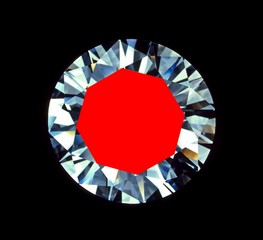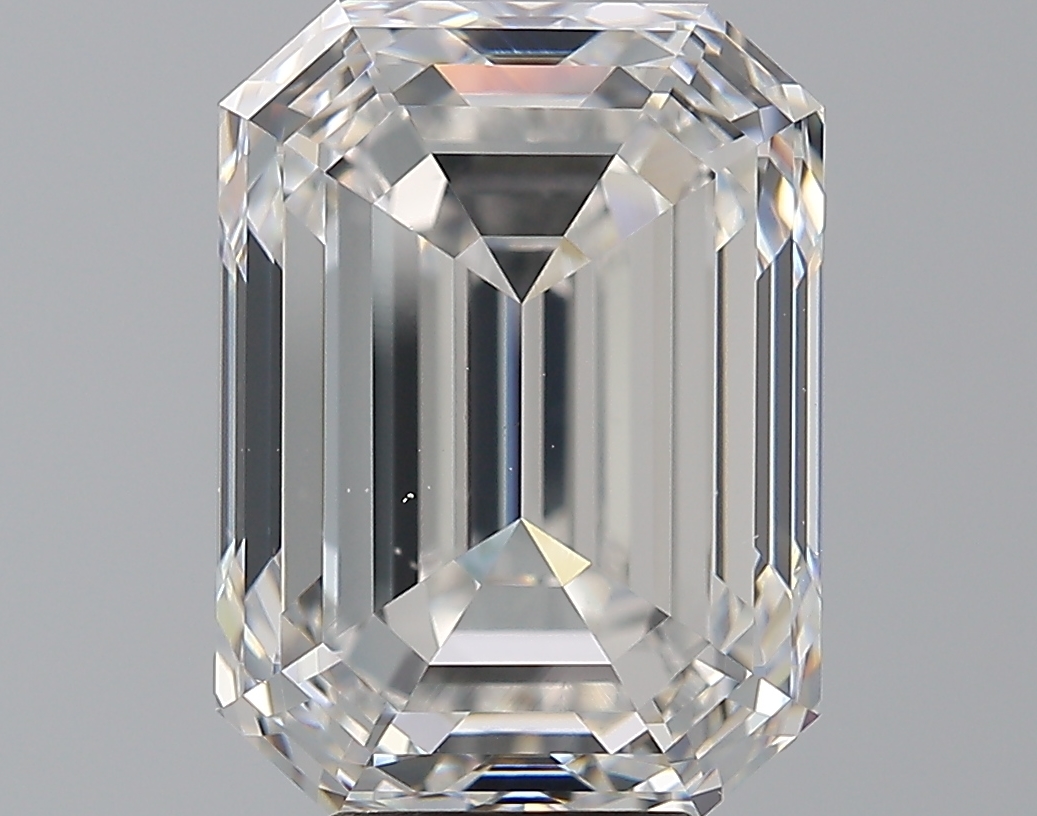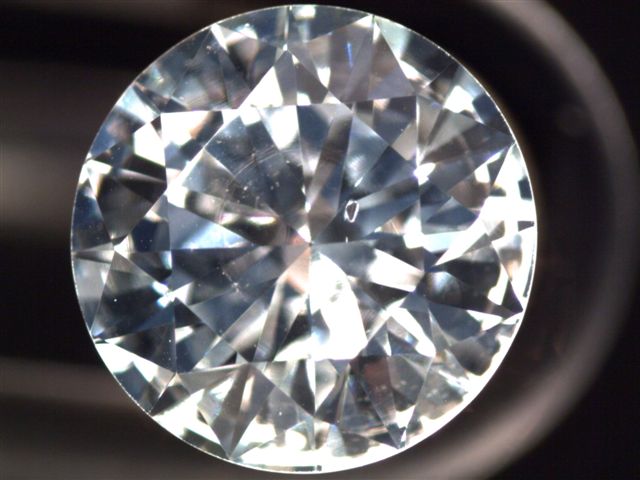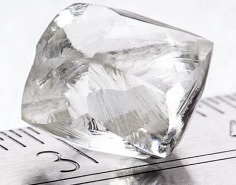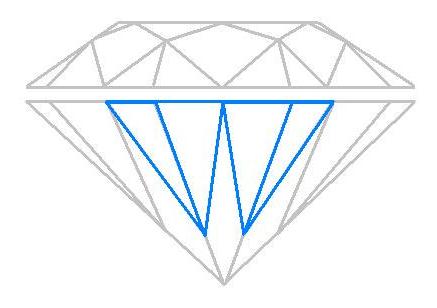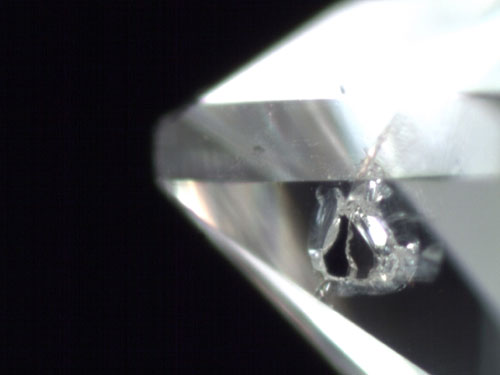The table is one of the most important facets of a polished diamond, situated at the very top of the diamond, in the crown area. It is the largest flat facet on the diamond and plays a crucial role in how light interacts with the stone. The table facet is typically positioned parallel to the girdle, which is the outermost edge of the diamond, and it serves as a window through which light enters and exits the diamond. The size and proportion of the table facet significantly impact the overall appearance, brilliance, and sparkle of the diamond.
Position and Shape:
The table is flat and circular in shape, with its size and dimensions typically defined as a percentage of the diameter of the diamond, measured from the girdle.
It is placed directly at the top of the diamond, centered on the crown. For round brilliant cut diamonds, the table should be symmetrical to allow for even light reflection and maximum brilliance.
The size of the table relative to the overall dimensions of the diamond is an important factor in its overall cut quality and light performance. A table that is too large or too small can negatively affect the diamond’s visual appeal.
Role of the Table in Diamond Brilliance:
The table facet is the primary surface through which light enters the diamond, and its quality directly influences the diamond’s brilliance (the amount of white light reflected). Light entering the table facet is refracted through the diamond’s other facets, creating the sparkle and life that is characteristic of a well-cut diamond.
If the table is too large, it may result in excessive light leakage, where light passes through the bottom of the diamond, reducing its brilliance. Conversely, a table that is too small may limit the diamond’s ability to reflect light effectively, making the diamond appear darker or less vibrant.
Table and Diamond Cut Quality:
The size of the table is one of the key factors considered when assessing a diamond’s cut grade. The table-to-depth ratio is calculated by measuring the table’s diameter and comparing it to the diamond’s overall depth. An ideal round brilliant cut diamond typically has a table size that falls within a certain percentage range of its overall diameter, usually between 53% and 58% for optimal brilliance.
Ideal Table Size: For round brilliant cut diamonds, an ideal table size typically falls between 53% and 58% of the overall diameter, balancing light reflection and maximizing brilliance.
Large Table: A diamond with an excessively large table relative to its depth may reflect less light, leading to a loss of brilliance and a flat appearance. In contrast, a smaller table could result in a diamond that looks darker or less reflective.
Table in Fancy Shapes:
While the table is a key feature in all diamonds, it is especially important for round brilliant cut diamonds. In fancy-shaped diamonds, such as princess, emerald, and asscher cuts, the table may vary slightly in shape and size to accommodate the unique proportions and angles of each cut. However, the role of the table in influencing light entry and brilliance remains consistent across all diamond shapes.
DCLA and Table Quality:
The Diamond Certification Laboratory of Australia (DCLA) is one of the leading authorities in diamond grading and certification, particularly within the Australian market. When a diamond is graded by DCLA, the table is assessed as part of the overall cut grade. DCLA uses a comprehensive set of criteria to evaluate all facets of the diamond, including the table facet.
The table is evaluated for size, symmetry, and alignment, ensuring that it contributes to the overall quality of the cut and the diamond’s ability to reflect light properly.
DCLA reports provide detailed information about the table size in relation to the diamond’s total diameter, helping consumers and investors understand how the table contributes to the diamond’s brilliance and overall visual appeal.
DCLA also measures the proportions of the table and other facets, ensuring that the diamond meets industry standards for ideal proportions. The laboratory’s expertise in evaluating the table facet, alongside other critical attributes like crown angle and pavilion depth, ensures that each diamond receives a thorough and accurate grading report that reflects its true quality.
Table and Diamond Certification:
In the grading report issued by DCLA, the table facet is one of the important details that helps determine the diamond’s overall cut grade. Since the cut is a significant factor in determining the diamond’s beauty and value, the size, proportions, and finish of the table are carefully examined. A well-proportioned table enhances the diamond’s light performance, while an incorrect or poorly finished table can result in suboptimal visual appeal.
In addition to the table’s size, the report may also include additional information about the table’s polish, symmetry, and overall surface quality, as these factors all influence the diamond’s final appearance.
The table is a crucial facet in determining a diamond’s overall beauty and brilliance. Its size, shape, and position play a vital role in how the diamond interacts with light and contributes to the diamond’s overall sparkle and visual appeal. Whether it is a round brilliant cut diamond or a fancy shape, the quality and proportions of the table can significantly affect the diamond’s grade and value. The DCLA ensures that diamonds are thoroughly assessed and accurately graded, with special attention to the table’s impact on the diamond’s overall cut quality and performance.
